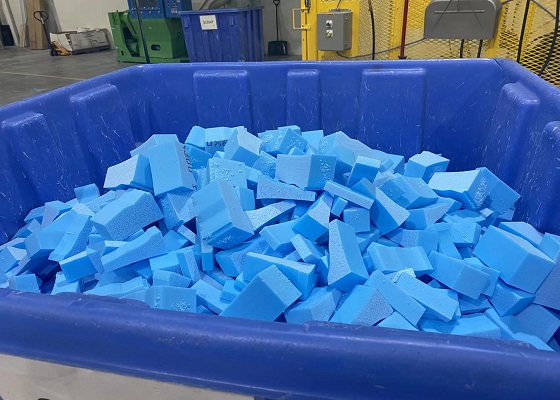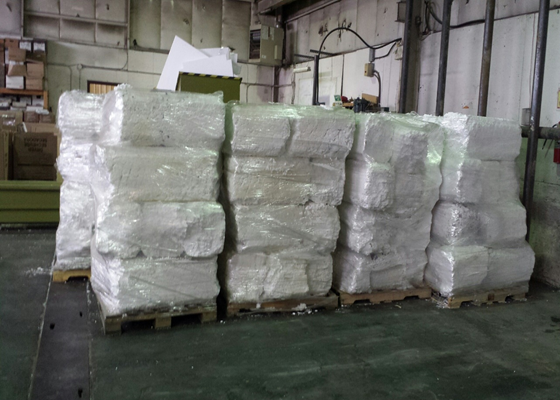EPS and XPS are not exactly the same foam but both can indeed be recycled by the foam compactor
EPS is made of beads while XPS is not. Both have complementary functions. EPS is often recycled into XPS for insulation. In France, 49% of commercial packaging is made from EPS and 13% of household packaging is, i.e. an overall rate of 30%. The deposit is in total 55,000 tonnes for the PSE and 20,000 tonnes for the XPS.
Our focus is not limited to France. Throughout Europe, the usage of EPS and XPS is roughly the same:In Europe, around 80% of EPS is used for building insulation and around 20% for packaging. During the health crisis, we saw the need for PES throughout Europe to maintain the cold chain essential for the conservation of anti-Covid vaccines. Likewise, it is difficult to keep caught fish fresh without an EPS crate. EPS also helps protect large household appliances from breakage during transport. It is the best packaging material for businesses and consumers alike.

Although the processing methods, forms and application scenarios of EPS and XPS are different, both can be recycled and can be recycled using the same foam compactor. Both EPS and XPS are renewable materials that are difficult to degrade and urgently need to be recycled. Both pre- and post-use materials can be recycled. Currently, both EPS and XPS are used in large amounts. If a recycling plan is not formulated that meets the rhythm, it will lead to an imbalance between usage and recycling, resulting in serious environmental pollution.

The Foam compactor removes the air by crushing and squeezing it to achieve recycling. GREENMAX foam compactor has been continuously upgrading its equipment in recent years. The quality of the electronic screen, body steel, and original parts in the electric control box it is currently equipped with are very reliable and durable. We will make backup copies of vulnerable parts when each foam compactor leaves the factory. This is also one of the reasons why GREENMAX can provide high-quality after-sales service.

